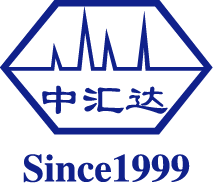|
Work Time Mon to Fri :8:00-17:00 Contact Details Tel::0411-86732112 Tel::0411-86732113 Tel::0411-86730533 fax::0411-86732114 E-mail:zhd@zhonghuida.cn URL::http://www.naturally-grace.com |
Notes for the Use of Liquid Chromatographic Column and Regeneration
I. Directions for use of chromatographic column.
(I) Matters needing attention before the use of chromatographic column: There is no special instruction for the storage solution of chromatographic column, which is mobile phase described in the evaluation report. Before use, pay attention to whether the storage solution of chromatographic column is mutually soluble with the mobile phase of the samples to be analyzed. In the reversed phase chromatograph, if the eluant is high-concentration salt or buffer solution, it is advised to firstly use low-concentration (about 10%) organic phase eluant, otherwise, it is likely that salt separates out of buffer solution in high-concentration organic phase and blocks up the chromatographic column.
(II) Mobile phase: The organic solvents used in the mobile phase should be chromatographically pure as far as possible. Water for mobile phase should be ultra-pure water or double distilled water in glass ware. It would be better if the mobile phase, especially saline mobile phase, is filtered through 0.45μm membrane. In addition, mobile phase containers, online filter in the chromatograph system, and other devices should be cleaned or placed periodically. The application range of PH value of bonded phase packing using conventional silica gel as substrate is normally between 2.0 and 8.0. BDS C18 is suitable for alkali compounds, whose applicable PH value varies between 2.0 and 10.0. If the chromatographic column must be used under the boundary condition of application range of PH value, clean it with the solvent which is suitable for column storage and mutually soluble with the mobile phase used immediately every time after use, and replace the originally used mobile phase completely.
(III) Sample: The sample should also be cleaned as much as possible. The sample filter or sample pretreatment column (SPE) can be chosen for sample pretreatment; If it is inconvenient to treat the sample, use guard column. While analyzing samples with normal phase chromatography, all solvents and samples should be strictly dehydrated. II. Preservation of chromatographic column.
(I) Maintenance of reversed phase chromatographic column after daily experiment: If buffer solution or saline mobile phase is applied, after experiment, use 10% methanol and 90% water to rinse the chromatographic column for 30 minutes to remove salt; then use methanol to rinse for another 30 minutes. Note: The column cannot be washed with pure water; instead, add 10% methanol in water to prevent the packing from collapsing.
(II) Long-term preservation of chromatographic column: If the column has to be stored for a long time, it must be stored in suitable solvents. Reversed phase column can be stored in pure methanol or acetonitrile; normal phase column can be stored in strictly dehydrated pure hexane; ion exchange column can be stored in water (containing preservatives such as sodium azide and sodium merthiolate), and plug the choke plug supplied while buying new chromatographic column. It is better that the storage temperature is room temperature.
III. Regeneration of chromatographic column. The chromatographic column is a consumable. As time goes by and with the increase of injection times, the chromatographic peak height will lower, peak width will widen and shoulder peak may appear, which generally meanthat column efficiency has reduced.
(I) Regeneration of reversed phase column: Use methanol and water (10:90 V/V), acetonitrile and isopropyl alcohol, which are 20-30 times of the column volume, as mobile phase to rinse the chromatographic column, respectively; afterwards, rinse the column in reverse order.
(II) Regeneration of normal phase column: Use hexane, isopropanol, methylene chloride and methanol, which are 20-30 times of the column volume, as mobile phase to rinse the chromatographic column, respectively; afterwards, rinse the column in reverse order. Note that the above mentioned solvents must be strictly dehydrated. IV. Common problems occurred during the use of chromatographic column and solutions. The commonest problem during the use of chromatographic column is increased column pressure. It is normal if the column pressure increases slowly during the long-term use process. However, if the column pressure suddenly increases during use (excluding system pipeline blockage and pressure sensor fault), possible reasons are as follows:
(I) The filter sieve plate at the top of the chromatographic column is clogged or contaminated;
(II) The packing at the top of the chromatographic column is polluted by samples;
(III) Buffer solution in the chromatographic column separates out salt in the form of crystal after meeting high-concentration methanol or other organic solvents;
(IV) Too big or too small PH value of the mobile phase leads to destruction or dissolution of fixed phase structure. Solutions are as follows:
(I) If the filter sieve plate at the top of the chromatographic column is contaminated, rinse the chromatographic column to normal pressure with methanol in opposite direction; or remove the column head, wash it in 10% dilute nitric acid ultrasonically for 10 minutes, then wash it in pure water ultrasonically for another 10 minutes, and finally re-install it into the chromatographic column.
(II) If the packing at the top of the chromatographic column is polluted, dismantle the screw at the top of the column, excavate contaminated packing in the front part of the column, fill the same new packing, and re-install the screw after careful renovation.
(III) If there is salt crystal, rinse the column firstly with 10% methanol and 90% water to dissolve all salt in the column, and then with high-concentration methanol.
(IV) If the PH value is not proper, it is hard to repair. TypeInfo: Technical Information Keywords for the information: |

